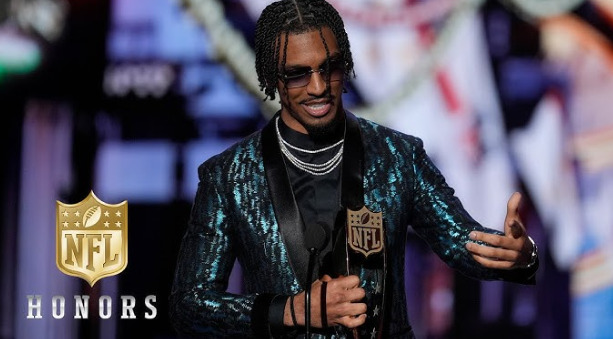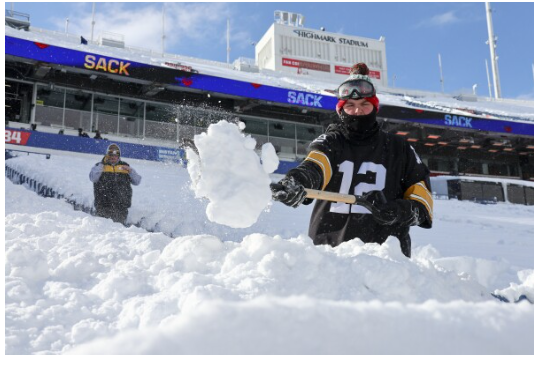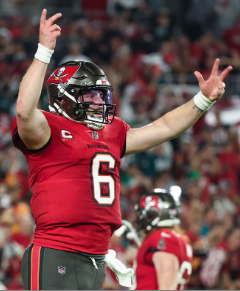In 2023, when the Major League batting average was at its lowest point in half a century, Aaron Leandhardt, minor league hitting coordinator for the New York Yankees and a former MIT physicist, sat down with his players in the clubhouse one by one, asking them what he could do better to help them with their hitting. Later that night, he gathered his answers and sat down at his desk, where he had an epiphany… the “sweet spot” on a baseball bat should be moved closer to the middle of the barrel, where the bat more commonly makes contact with the ball.
According to MLB rules, this bat is legal; the only requirements are that the bat can’t be longer than 42 inches, it has to be one solid piece of smooth wood, and that the diameter has to be at least 2.61 inches. This was lowered by .14 inches in the early 2000s due to an increase in broken bats, which were dangerous not only for fans but for players as well, many having to leave the game because of injury. Tyler Colvin sustained an injury from a broken bat when he was struck in his neck and had to leave in the middle and miss the rest of the season. This .14 inch decrease in the diameter of the bat caused an average .3 league-wide drop in batting average, OBP (On base percentage), and slugging, and an insane 500 fewer runs scored the next year.
The whole process of custom bats started through a method called “bat fitting,” where players spent thousands of dollars to have their bats customized to them through motion tracking systems and hitting tendencies. The bat fitters change the weight distribution, weight, length and the knob of the bat. Just one single session of bat fitting can cost up to $7,500 for adjustments as small as changing the size of the barrel by 0.01 inches. Teams picked up on this and invested over 5-6 million dollars to build these labs in their practice facilities, spring training camps, and batting cages. Francisco Lindor used this method in the offseason before the 2024 season and had one of the best years of his career, hitting 33 home runs with a .273 batting average and a .844 OPS (On Base % + Slugging %). This year, already, he has better batting splits in this current season. Paul Goldschmidt used this same method on every single one of his 3+ wooden bats. Just one year after that, he hit 35 home runs with a .317 batting average and an astonishing .981 OPS for the Cardinals (which were all career highs), winning MVP for the first time in his career. Now, just three years later, he is batting .353 in the Yankees’ lineup using the new torpedo bat.
Throughout 2024, a handful of players decided to make the big switch. Giancarlo Stanton decided it was time to use Leanhardt’s idea for the playoffs, after batting .233 on the season and an abysmal .193 in September. With just that small shift in the weight distribution, size, and location of the barrel, Stanton increased his batting average by 50 points, batting .273 in October with seven home runs and 16 runs batted in. Stanton, in five fewer at-bats than his monthly average, hit more home runs than he did in every month of the year during the regular season. All just because he chose to adopt Leanhardt’s abnormal method. However, in 2025, while Stanton’s teammates were following suit with the new bat during spring training, he was on the bench due to torn tendons in both his elbows, and he stated it was “probably due to some bat adjustments.” But it was early in the year, still no one knew about these torpedo bats, and no one who wasn’t in the know thought anything of it.
Then, just one week later, the change happened. The Yankees took the league by storm using Leanhardt’s new torpedo bat, which worked. The Yankees started the season by hitting nine home runs in a game, in a 20-9 win over Milwaukee, and then again smashing five home runs in a 12-3 win, combining for a total of 32 runs in two games and launching 14 home runs into the seats. When you think of some of the best Yankees’ lineups, such as the 1927 Yankees lineup “Murderers Row” with Babe Ruth, who hit 60 home runs that year, and Lou Gehrig, who had 175 RBIs (Runs batted in). Similarly, the 1961 “M&M Boys” with Mickey Mantle, who had 54 homers, and Roger Maris, who had the once record 61 home runs (broken by Aaron Judge on the Yankees in 2022 with 62), and a team total of 240 homers. The 1998 Yankees Dynasty team that had 114 wins with Derek Jeter, Jorge Posada, and Bernie Williams, you would think all of the previous Yankees teams would have hit more than nine home runs in a game, but no, just because of the torpedo bat, a team with a catcher who has a career .224 batting average, a slightly above average shortstop, and a decaying outfield somehow broke the Yankees record of nine home runs in a game, just because they were using the torpedo bat.
After this record was broken, the MLB caught wind of the Yankees’ tactics. They were getting all the attention for this bat until a photo of the Twins’ Ryan Jeffers using the torpedo bat circulated. There were at least eight teams with a player using this bat on opening day, and suddenly every player in the MLB wanted one if it could make them do what the Yankees were doing. Within another two days, the Red Sox’s Alex Bregman had one, the Rangers’ Joc Pederson had one, and the Phillies’ second baseman, Bryson Stott, said the Phillies had already bulk-ordered over 100 for their team. The Reds ordered someone from Louisville Slugger to travel from Kentucky up to Cincinnati to make the bats for them immediately. Star Reds’ shortstop Elly De La Cruz received one shortly after and went four for five with two home runs in his first game using it. At that point, people believed the torpedo bat should be banned in the MLB, and this went so far that people started selling lists of players using the bat to sports bettors so they could bet on home run odds. Separate sports betting apps devoted sections to bets for torpedo bat users, and when the Yankees faced the Diamondbacks on April 2nd, 90.5% of public sports bettors bet the over on the home run parlay. Marrucci, a bat company, stated nearly 25% of MLB contacted them regarding the torpedo bat, and they officially released custom torpedo bats with specifications each Marrucci-sponsored player used. Another bat company, Victus, did the same and had its most profitable day in company history. This is all before high schools, sports academies, Division 1 colleges, and even families began to invest thousands of dollars into metal torpedo bats. So far, fourteen players have been tracked using these bats, and nine have seen an increase in OPS. Therefore, if the entire league started to use these torpedo bats and got the same results, it would potentially be the biggest offensive increase in baseball history.
The torpedo bat not only changed the offensive game of baseball for this season, but if it stays legal, could also trigger a series of unique bat designs customized for different hitters and ultimately trigger one of the biggest offensive jumps in recent MLB history. This could possibly make Leanhardt one of the most prominent inventors in the game of baseball and be credited with reshaping America’s game.






Jim Twomey • May 25, 2025 at 7:34 PM
Great article James. Well presented and well thought out.